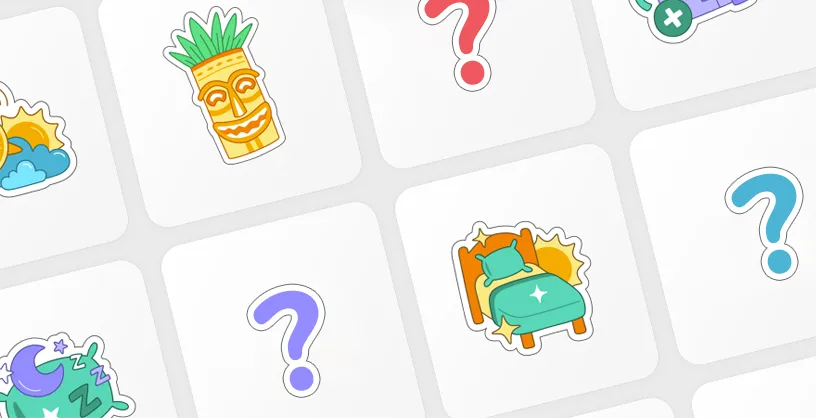
What is a Habit?
If you’ve been to your local bookstore recently or browsed the best sellers on your audiobook app, you will have noticed the likes of Atomic Habits and Tiny Habits. These are just a few of the titles which have flooded the popular psychology book market and climbed the best-seller lists in the past few years… and they are most certainly onto something. Habits are those countless behaviors we do each day – driving a car, tying our shoelaces, or reaching for our phone the moment we wake up - we do them on autopilot.
Some estimate that on any given day, depending on the context, the average human makes approximately 35 000 decisions. When you think back on your day, you can probably only list a handful of conscious decisions you had to make – what to eat, what to wear, what to watch etc. The other thousands of decisions happened unconsciously. Those are habits.
Unknowingly, in most cases, these tiny habits fill up our day, shape our direction and drive our productivity (or lack thereof). In the words of American author Annie Dillard, “How we spend our days is, of course, how we spend our lives.” It goes without saying then, that by harnessing our habits we can harness our days and take better control of our lives.
Categorizing habits into fixed categories such as ‘good’ or ‘bad’ is not always helpful. Instead, it is sometimes better to rank a habit in accordance with what direction it moves you in – toward a goal or away from it? Toward the kind of a person you want to be, or away from it? Does running for half an hour each morning align with your goal of keeping healthy and active? Then it’s probably a habit worth building!
It’s easier said than done, but by understanding the science behind how we form habits (and break others) we can start moving in the right direction.
Habit Formation
All the leading habit theorists and behavioral scientists out there have their own take on habit formation, but there is one common thread – the habit loop. This is the process through which we develop and perform habits. It consists of four parts: Prompt, Craving, Behavior, and Reward. Think of probably the most common (but not always helpful) habit out there – reaching for your cell phone the moment you wake up.
Waking up and seeing your phone would be the prompt. If it weren’t there in the first place, you probably wouldn’t walk to another room to find it.
The craving would be the sudden desire you get to pick up your phone to see if you received any messages or notifications.
Picking up your phone and opening unread messages or emails, or even scrolling social media, would be the behavior.
That kick of the immediate dopamine release you get when you see all those unread notifications or likes is the reward. That’s what makes it worth doing again.
This behavior is not one we recommend and certainly does not contribute to overall productivity or wellness. Instead, research actually shows that checking your phone first thing in the morning can lead to greater stress levels and interrupt our brains’ natural stages of early awakening – known as brain waves theta and alpha – which promote focus. This example is perhaps most relatable to many of us because we don’t even think about it when we do it!
Tiny Steps
Through understanding how habit formation works, we can begin to introduce new habits and unlearn older ones. All of the authorities on the topic agree that starting small is the key to creating long-lasting habits. Too often we make the mistake of setting lofty or unachievable goals and then beat ourselves up when we fall off the wagon or lose motivation. According to B.J Fogg, the author of Tiny Habits, “The essence of Tiny Habits is to take a behavior you want, make it tiny, find where it fits naturally in your life, and nurture its growth.” This is the very foundation of our curriculum at Coachbit. Small and easily actionable steps slowly become habits, which become routines, and ultimately lead to behavioral and lifestyle changes.
The Teenage Brain
It’s never too late to learn new habits, or unlearn old ones. According to Professor Laurence Steinberg, a leading expert on adolescent psychological development, and author of Age of Opportunity: Lessons from the New Science of Adolescence, between the ages of 12 and 25, our brains are mostly plastic. Neuroplasticity, simply speaking, is the brain’s ability to change its structure and functioning during learning. Adolescents and teenagers are neurobiologically wired to learn. It is understandable then that there is no better time than adolescence to form long-lasting habits.
Latest research shows that during this period, the teenage brain is extremely vulnerable and undergoing much change. Some areas of the brain are, however, maturing faster than others. The prefrontal cortex, the control center of the brain responsible for planning, prioritizing and impulse control, matures at a far slower rate than other areas of the brain such as the limbic system which is responsible for emotions, memories, and arousal.
The results of these developmental imbalances explain why some teenagers are physiologically wired to seek immediacy and, in some cases, take part in risky behaviors. Fluctuating Dopamine levels in the teenage brain also explain their vulnerability to boredom and their need for immediacy.
This is a double-edged sword of sorts. Neurobiologically teenagers are primed to learn but are also primed to take risks and make poor decisions. For this reason, Dr Jay Giedd, an adolescent psychiatrist at the National Institute of Mental Health, explains adolescence as a “time of great risk and great opportunity”. Equipping teenagers with the appropriate tools to build new and healthy habits is thus pivotal to their long-term success.
Other research indicates that “psychosocial, social support, and family of origin resources during adolescence exert a persistent, though generally not cumulative, influence on healthy behavior trajectories through young adulthood.” Not only do teenagers require the support of parents, caregivers or mentors during these formative, and vulnerable, years but they often look to them as examples. James Clear, the author of Atomic Habits, explains that as humans “We tend to imitate the habits of three social groups: the close (family and friends), the many (the tribe), and the powerful (those with status and prestige).” This is another reason why a Coach can be an extremely influential role model in the life of a student and can lead them in the direction of healthy habits.
4 Steps Building Habits that Stick
What better way to support your child through their habit revamp than by taking on a new habit of your own and accompanying them on the journey? Here are a few tips and tricks to get you started.
Both James Clear and B.J Fogg agree that the easier a behavior is to do, the more likely it will become a habit. The opposite is true for unlearning habits. Making a habit difficult, or creating obstacles to performing it, will decrease the likelihood of it being done. James Clear outlines the four basic laws of behavior change which one can use to build better habits:
Make it obvious – make it easy to see something (the prompt) that will remind you to perform the habit. If the first thing you see when you wake up in the morning is a glass of water next to your bed, you are more likely to drink up and start your day hydrated.
Make it attractive – make sure it aligns with your goals and provides you with some kind of reward. Why not surround yourself with like-minded people. Join a group or a club where your desired habit or behavior is the norm.
Make it easy – remove all obstacles likely to get in your way. If you’re wanting to get to the gym before work in the morning, set out your gym clothes the night before. Some would even go as far as sleeping in them.
Make it satisfying – in most cases, the completion of the habit will fulfill the craving (like drinking that cold water when you are thirsty). That’s the reward. Not all rewards are internal though. In those instances why not use a habit tracker to mark your progress. Visual evidence of progress can be both satisfying and motivational.
These laws can be inverted in the case of unlearning a habit – make it invisible, make it unattractive, make it difficult and make it unsatisfying.
Final Thoughts
A better understanding of the science behind behavior change and habit formation can assist anyone in making sustainable lifestyle changes. The science is plain and simple – by breaking a desired behavior or habit down into smaller and more palatable steps or tasks, the chances of quitting or losing motivation along the way are minimized. These principles underscore each module of our curriculum at Coachbit, and we strongly believe they are the (not so secret) secret to the success of our students.
Recommended Resources:
Atomic Habits by James Clear
Tiny Habits by BJ Fogg
The Power of Habit by Charles Duhigg
The Age of Opportunity by Laurence Steinberg
How many core habits and skills is your child missing?
Take our short quiz and find out.
Take our quiz
%20(1)_Z11v7sr.webp)
_Z5TrlU.webp)
